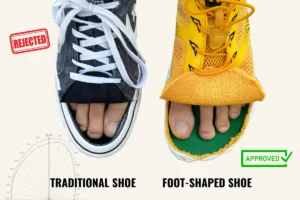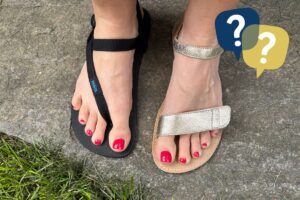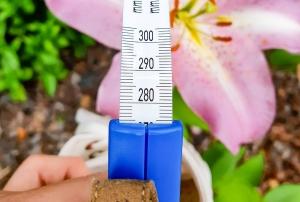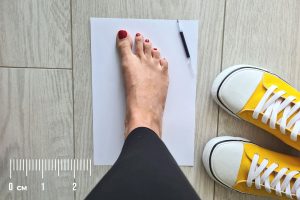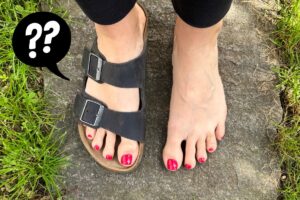Barefoot Shoes vs Regular Shoes: What’s the Real Difference?
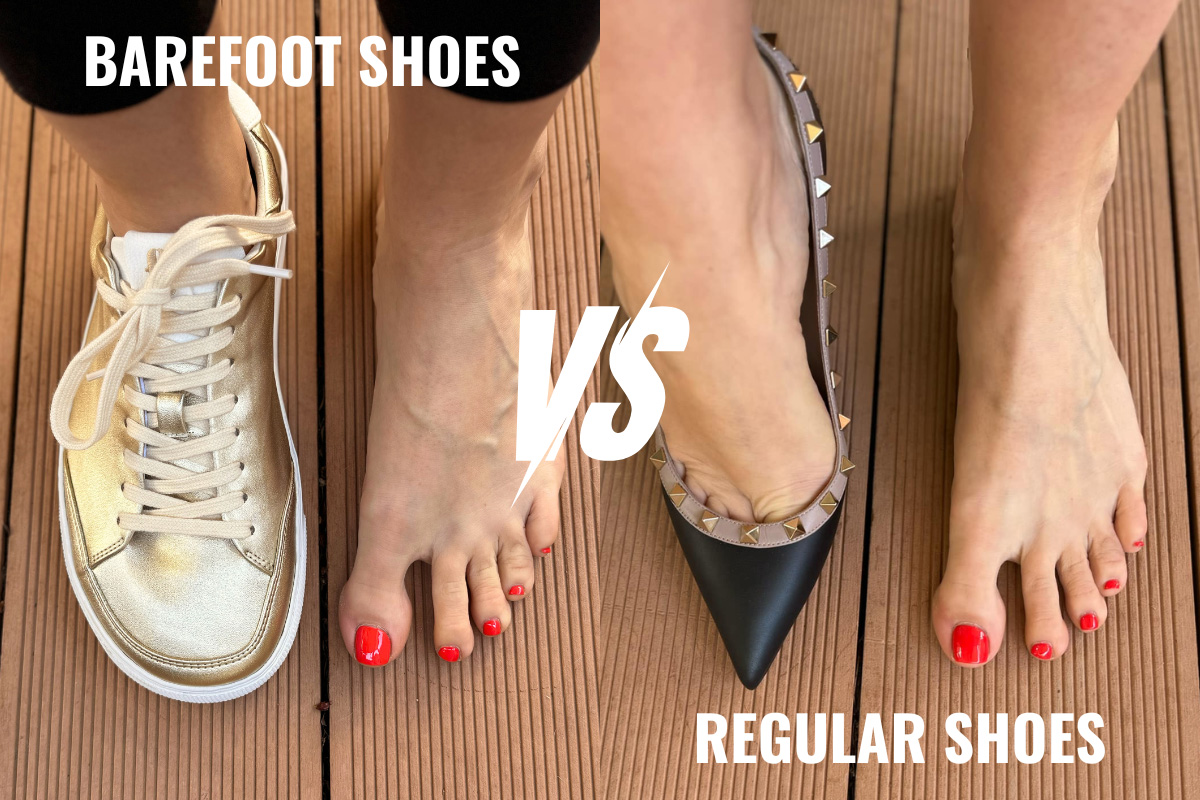
If you’ve ever slipped into a pair of barefoot shoes and thought, “Whoa, this feels totally different,” you’re not imagining it. Barefoot shoes and regular shoes are designed from completely different philosophies.
One aims to support and cushion. The other? To get out of the way and let your feet do their thing.
So what’s the real difference between barefoot shoes and regular shoes – and does it actually matter?
Let’s break it down in a way that makes sense (and helps you decide which one your feet really need).
What Are “Regular” Shoes?
“Regular shoes” is a broad term, but we’re talking about your standard sneakers, running shoes, dress shoes, or everyday footwear that most people wear.
They’re typically built with:
- Elevated heels
- Arch support
- Cushioned soles
- Structured designs
- Tapered toe boxes
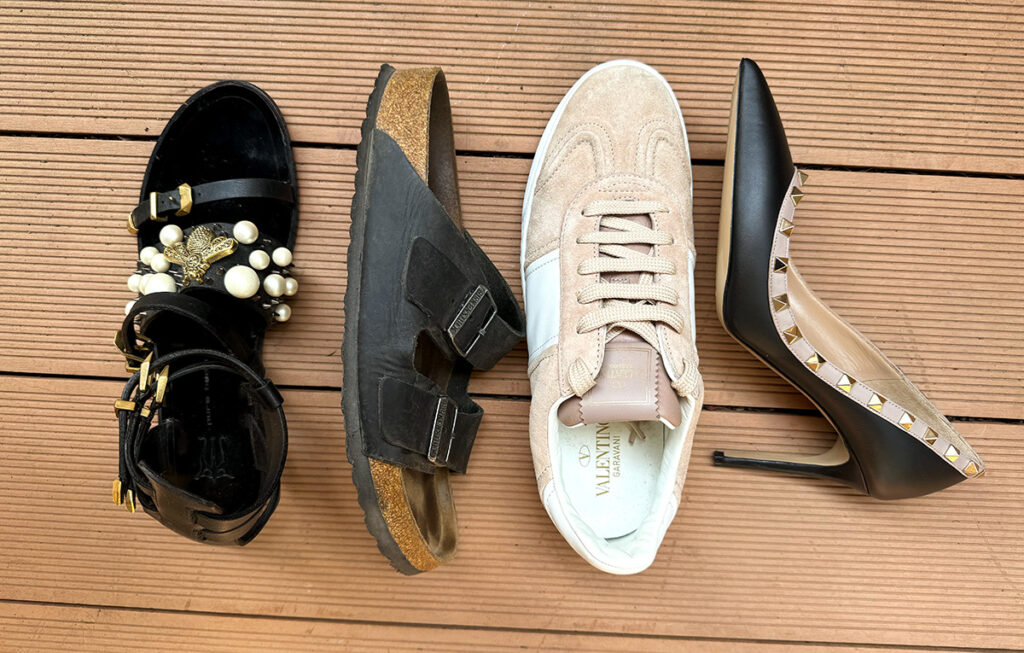
These shoes are designed to support, stabilize, and protect your feet. But here’s the catch: the more support a shoe gives, the less your feet have to work on their own. Over time, that can actually lead to weaker foot muscles, poor posture, and foot-related pain.
What Are Barefoot Shoes?
Barefoot shoes are designed to mimic walking barefoot, while still protecting your feet from the elements.
They prioritize natural movement with features like:
- Zero drop (no heel elevation)
- Wide, foot shaped toe boxes for toe splay
- Thin, flexible soles for ground feel
- No arch support (so your foot muscles do the work)
- Minimal cushioning

In barefoot shoes, your feet are free to move, flex, grip, and stabilize – just like they would if you weren’t wearing shoes at all.
👉 Not sure what counts as a barefoot shoe? Check out our full guide: What Are Barefoot Shoes?
Side-by-Side Comparison
Let’s look at the core differences between barefoot shoes and regular shoes. It’s not just about looks – it’s about how your feet function, respond, and grow stronger (or not) over time.
| Feature | Regular Shoes | Barefoot Shoes |
|---|---|---|
| Heel Height | Elevated (often 5–15mm or more) | Zero-drop (heel and toe at same height) |
| Toe Box | Tapered, narrow | Wide and foot-shaped |
| Sole Thickness | Thick and cushioned | Thin |
| Flexibility | Stiff and rigid | Flexible and bendy |
| Arch Support | Built-in, passive | None (your foot does the work) |
| Fit | Often tight or loose | Secure and natural |
| Foot Engagement | Foot is supported and passive | Foot is active, working with each step |
| Ground Feel | Very little feedback from the surface | High sensory feedback (proprioception) |
| Posture Impact | Can shift alignment forward due to heel | Encourages natural alignment and balance |
Each of these features affects how your entire body moves and functions. A seemingly small detail – like heel height or toe box shape – can make a big difference in comfort, balance, and long-term foot health.
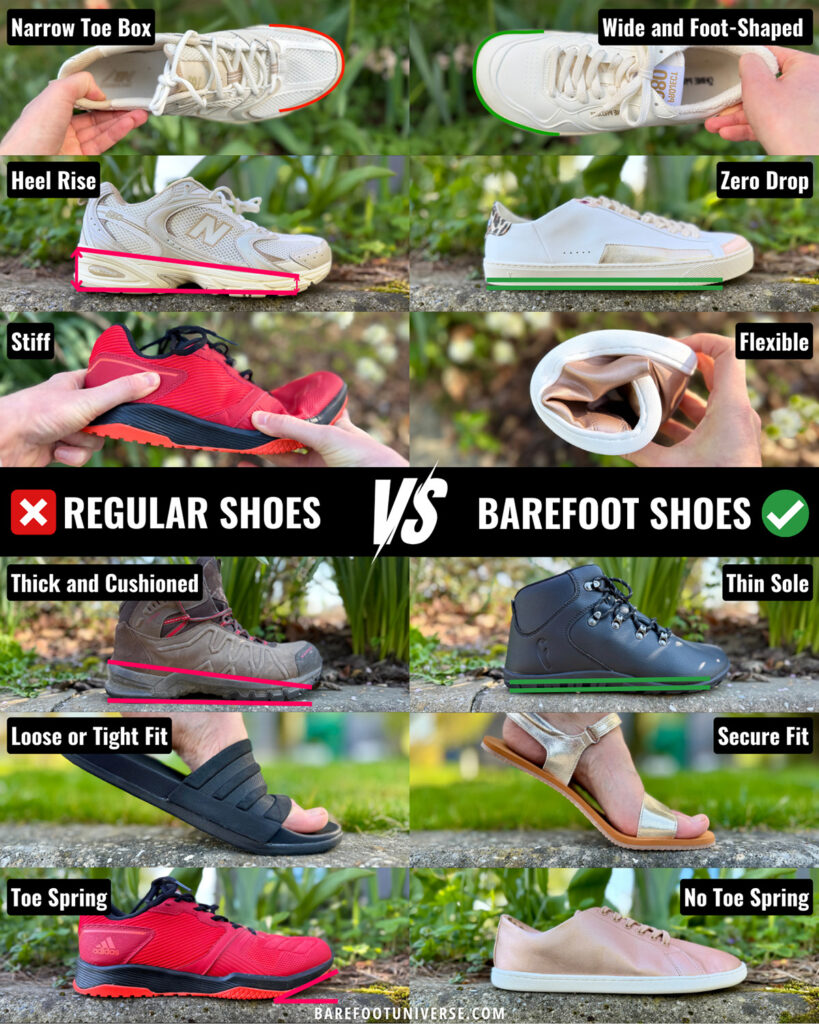
Why the Difference Matters
Your feet aren’t just passive stumps at the end of your legs. They’re complex, dynamic structures made to move, flex, and sense the world beneath you.
Here’s what barefoot shoes allow that regular shoes often prevent:
✅ Natural toe splay
Wide toe boxes mean your toes can spread and stabilize your body like they’re meant to – no more overlapping toes or cramped pinkies.
✅ Stronger foot muscles
Without artificial arch support, your intrinsic foot muscles do the work. Over time, this leads to more strength, better stability, and even reduced pain.
✅ Better balance & posture
Zero drop means you stand evenly grounded. Your hips, spine, and head align more naturally—no more subtle forward tilt caused by raised heels.
✅ Improved sensory feedback
Your feet have thousands of nerve endings. When you can feel the ground beneath you, your body reacts faster, moves smarter, and feels more connected.
👉 Want the full list? See our post on the Benefits of Barefoot Shoes
Which One Is Better?
At Barefoot Universe, we believe in natural foot function – and barefoot shoes are designed to support exactly that. So while we never recommend traditional narrow, supportive shoes, we recognize that not everyone can jump into thin-soled barefoot shoes right away.
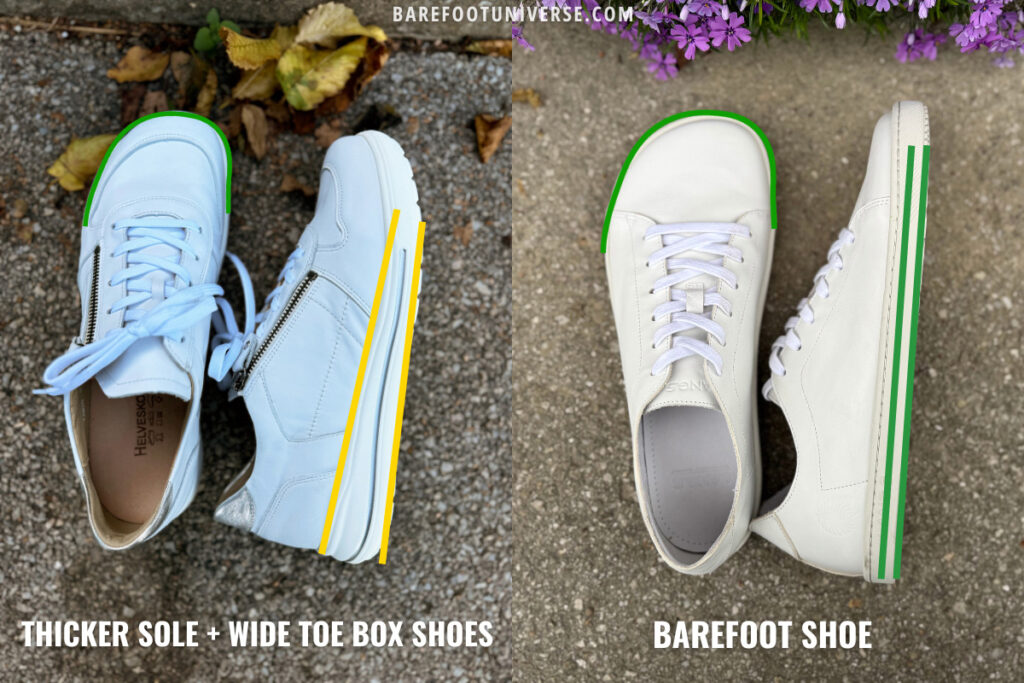
Here’s how to decide what works best for your feet:
🟩 Go for barefoot shoes if you:
- Want to improve your foot strength, posture, and alignment
- Are tired of narrow, uncomfortable shoes
- Are ready to retrain your feet and move more naturally
🟨 Start with thicker soles + wide toe box if you:
- Are recovering from an injury
- Have a medical condition that needs more support or cushioning
- Spend long hours on hard floors and your feet aren’t used to barefoot shoes yet
- Prefer a gentler transition while still prioritizing toe space and foot shape
👉 Check out our guide to Best Wide Toe Box Shoes with Extra Cushion for beginner-friendly options.
How to Transition Safely to Barefoot Shoes

Switching from cushioned, supportive shoes to barefoot shoes too quickly can cause pain or injury. Here’s how to do it right:
- Start slow – 30–60 minutes a day
- Use them in easy environments – like at home or on soft ground
- Strengthen your feet – with exercises like toe lifts, balance drills, and foot rolling
- Listen to your body – soreness is okay, sharp pain is not
Want a complete step-by-step plan?
👉 Head to our full guide on How to Transition to Barefoot Shoes for expert tips, and real-life advice.
Final Thoughts: Which Shoes Respect Your Feet?
Barefoot shoes aren’t a trend – they’re a return to how your feet were always meant to function. They offer a radically different experience from regular shoes, and for many people, that difference is life-changing.
That said, there’s no one-size-fits-all solution. But the more you learn about your feet, the more you realize:
It’s not about supporting them more. It’s about freeing them to do what they were designed to do.
Want to know if barefoot shoes are right for your feet?
Take our Foot Width Quiz and find barefoot brands that actually match your natural foot shape.
Got questions or personal experiences? Drop them in the comments – let’s talk feet! 🦶


